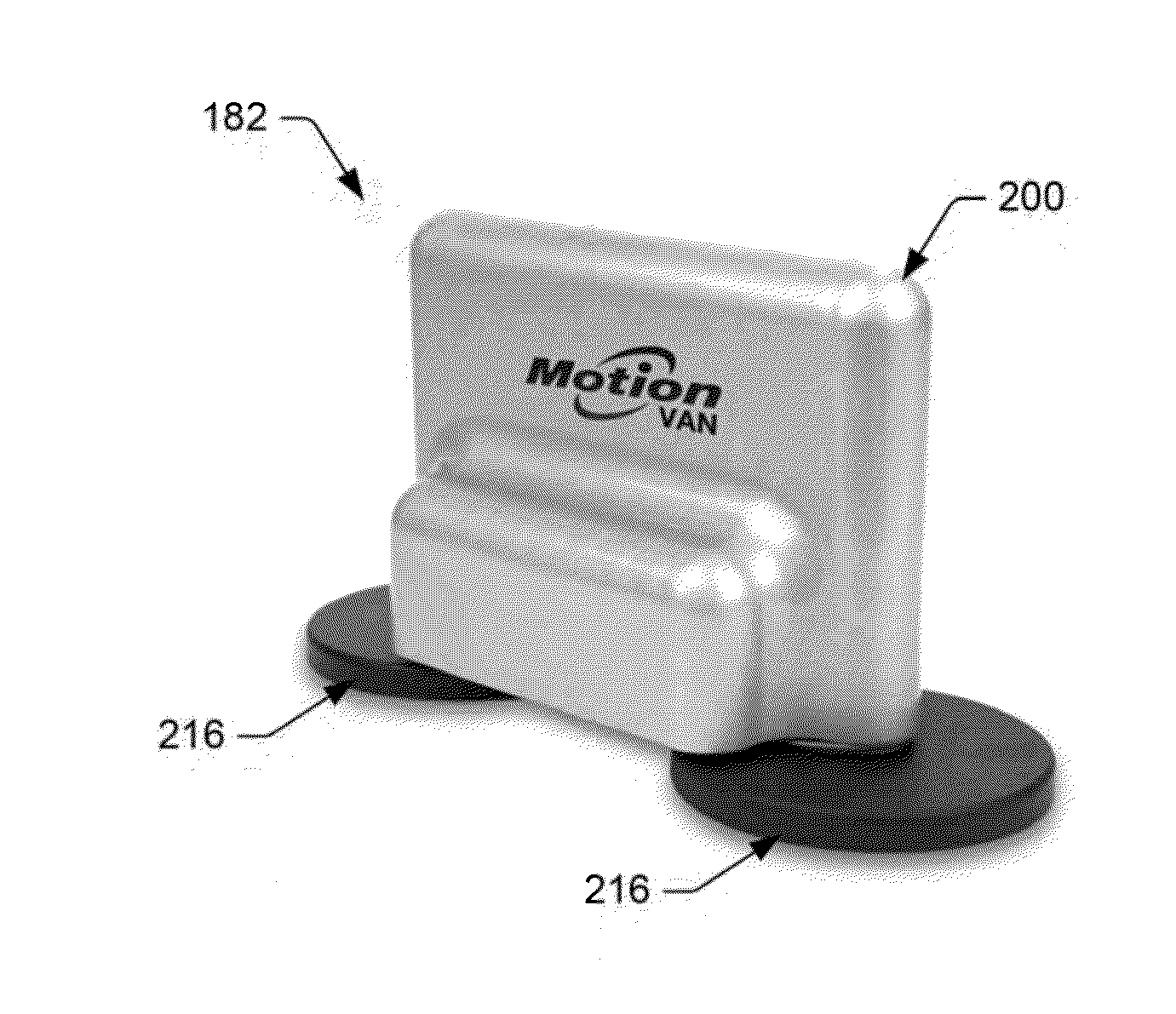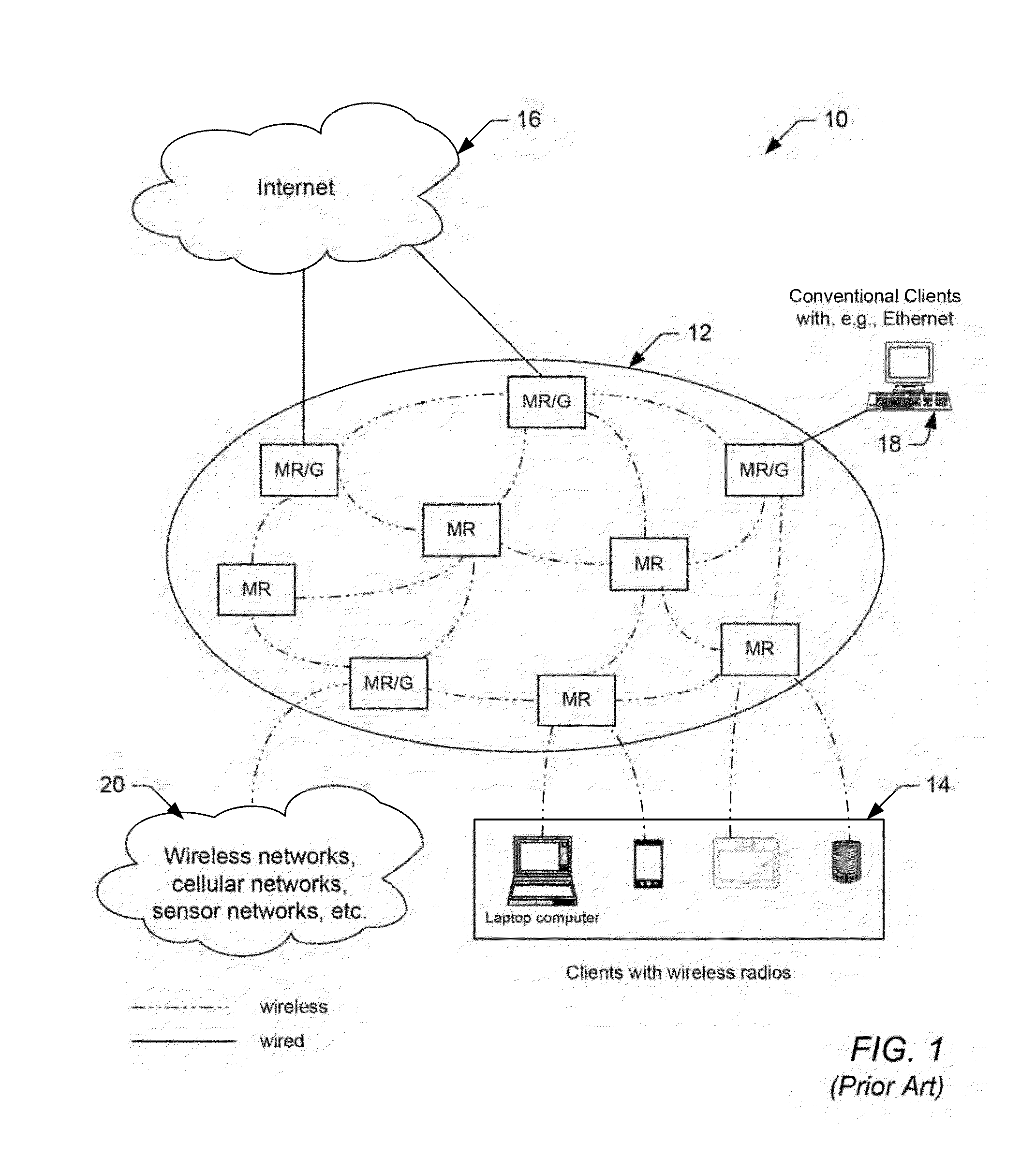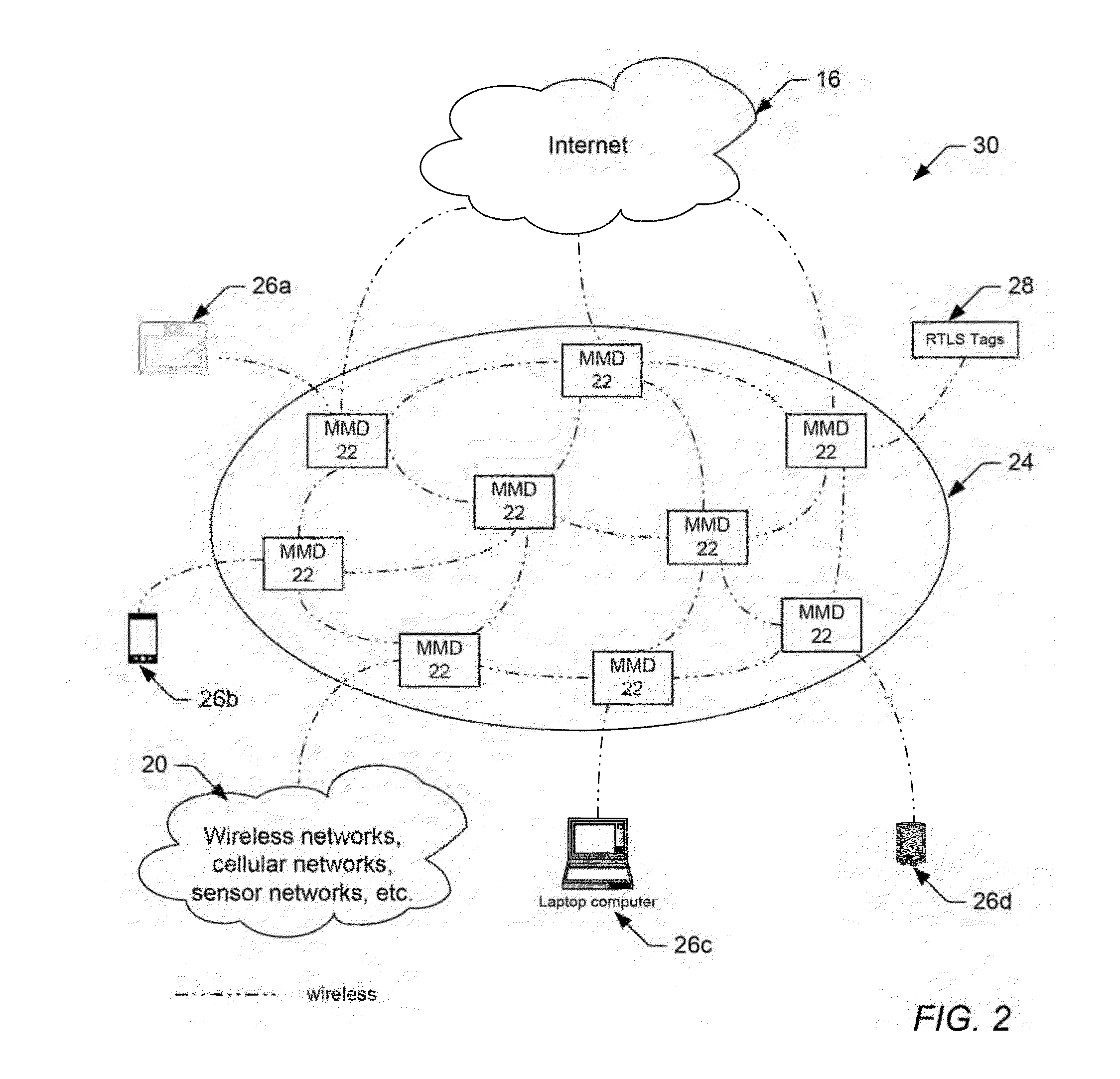Portable Wireless Mesh Device Having Improved Antenna System
a wireless mesh and antenna system technology, applied in the field of wireless mesh networks, can solve the problems of limiting the amount of power that a node can use to transmit, the mesh router is typically fixed in place or has extremely limited mobility, and the fixed wireless mesh network, so as to save significant time and cost in setting up the network
- Summary
- Abstract
- Description
- Claims
- Application Information
AI Technical Summary
Benefits of technology
Problems solved by technology
Method used
Image
Examples
Embodiment Construction
[0053]FIG. 2 illustrates an improved wireless mesh network 30 comprising a plurality of portable, self-contained wireless mesh devices 22 (referred to hereinafter as mobile mesh devices, or MMDs), which can be used to provide a temporary and / or rapidly deployable wireless mesh network. Similar to the wireless mesh routers (MRs) shown in FIG. 1, the mobile mesh devices 22 used within the wireless mesh network 30 of FIG. 2 provide a self-forming, self-configuring and self-healing network of mesh nodes. These nodes are organized in a mesh topology and create a wireless mesh backbone 24 that offers services to client devices 26, e.g., by providing wireless client access to the Internet 16, to other client devices 26, and to other wired or wireless networks 20 (which may include, but are not limited to, other mesh networks, other wireless networks, cellular networks, and sensor networks). Like the wireless mesh routers (MRs) shown in FIG. 1, the mobile mesh devices 22 shown in FIG. 2 uti...
PUM
 Login to View More
Login to View More Abstract
Description
Claims
Application Information
 Login to View More
Login to View More - R&D
- Intellectual Property
- Life Sciences
- Materials
- Tech Scout
- Unparalleled Data Quality
- Higher Quality Content
- 60% Fewer Hallucinations
Browse by: Latest US Patents, China's latest patents, Technical Efficacy Thesaurus, Application Domain, Technology Topic, Popular Technical Reports.
© 2025 PatSnap. All rights reserved.Legal|Privacy policy|Modern Slavery Act Transparency Statement|Sitemap|About US| Contact US: help@patsnap.com



